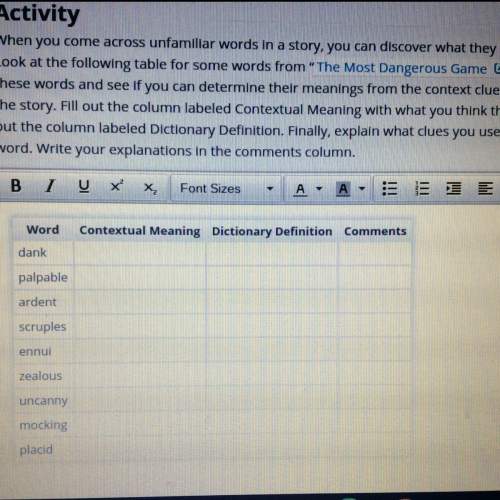(01.03 MC)
Read the following passage carefully before you choose your answer.
The fol...

(01.03 MC)
Read the following passage carefully before you choose your answer.
The following is an excerpt from an autobiography written in the third person by Henry Adams, a prominent Bostonian.
The chief charm of New England was harshness of contrasts and extremes of sensibilitya cold that froze the blood, and a heat that boiled itso that the pleasure of hatingone's self if no better victim offeredwas not its rarest amusement; but the charm was a true and natural child of the soil, not a cultivated weed of the ancients. The violence of the contrast was real and made the strongest motive of education. The double exterior nature gave life its relative values. Winter and summer, cold and heat, town and country, force and freedom, marked two modes of life and thought, balanced like lobes of the brain. (5)Town was winter confinement, school, rule, discipline; straight, gloomy streets, piled with six feet of snow in the middle; frosts that made the snow sing under wheels or runners; thaws when the streets became dangerous to cross; society of uncles, aunts, and cousins who expected children to behave themselves, and who were not always gratified; above all else, winter represented the desire to escape and go free. Town was restraint, law, unity. Country, only seven miles away, was liberty, diversity, outlawry, the endless delight of mere sense impressions given by nature for nothing, and breathed by boys without knowing it.
Boys are wild animals, rich in the treasures of sense, but the New England boy had a wider range of emotions than boys of more equable climates. He felt his nature crudely, as it was meant. (10)To the boy Henry Adams, summer was drunken. Among senses, smell was the strongestsmell of hot pine-woods and sweet-fern in the scorching summer noon; of new-mown hay; of ploughed earth; of box hedges; of peaches, lilacs, syringas1; of stables, barns, cow-yards; of salt water and low tide on the marshes; nothing came amiss. Next to smell came taste, and the children knew the taste of everything they saw or touched, from pennyroyal and flagroot2 to the shell of a pignut and the letters of a spelling-bookthe taste of A-B, AB, suddenly revived on the boy's tongue sixty years afterwards. Light, line, and color as sensual pleasures, came later and were as crude as the rest. The New England light is glare, and the atmosphere harshens color. (15)The boy was a full man before he ever knew what was meant by atmosphere; his idea of pleasure in light was the blaze of a New England sun. His idea of color was a peony, with the dew of early morning on its petals. The intense blue of the sea, as he saw it a mile or two away, from the Quincy hills; the cumuli3 in a June afternoon sky; the strong reds and greens and purples of colored prints and children's picture-books, as the American colors then ran; these were ideals. The opposites or antipathies, were the cold grays of November evenings, and the thick, muddy thaws of Boston winter. With such standards, the Bostonian could not but develop a double nature. (20)Life was a double thing. After a January blizzard, the boy who could look with pleasure into the violent snow-glare of the cold white sunshine, with its intense light and shade, scarcely knew what was meant by tone. He could reach it only by education.
Winter and summer, then, were two hostile lives, and bred two separate natures. Winter was always the effort to live; summer was tropical license.
(1918)
1Syringas are ornamental shrubs.
2Pennyroyal is a mint plant; flagroot is the root of a particular herb.
3Cumuli are thick clouds.
Which of the following best characterizes the development of the phrase "a cold that froze the blood, and a heat that boiled it" (sentence 1)? (2 points)
Descriptions alternating between impression and reality
Evocative details arranged to support a simile
Hyperbolic imagery that emphasizes extreme contrasts
Juxtaposed concepts that enhance a simile
Literal descriptions that provide support to a claim

Answers: 1
Other questions on the subject: English

English, 21.06.2019 14:00, mandilynn22
Which techniques best describe the tone the author is using in this passage?
Answers: 2

English, 21.06.2019 19:30, Legoman29305
Who were the three first american novel list of major league chew statue in the early 19 century
Answers: 1

English, 21.06.2019 23:00, dbhuggybearow6jng
American history (is, are) studying the american colonies.
Answers: 1

English, 22.06.2019 05:40, courtneywick
To choose a good persuasive essay topic, begin with a big idea, narrow it down, and a. then narrow it down more; it is impossible to have a topic that is too narrow. b. do some research to see what you should write about c. specify-ask a question you want answered in your argument
Answers: 1
Do you know the correct answer?
Questions in other subjects:




Mathematics, 18.07.2020 22:01


Chemistry, 18.07.2020 22:01




Mathematics, 18.07.2020 22:01







